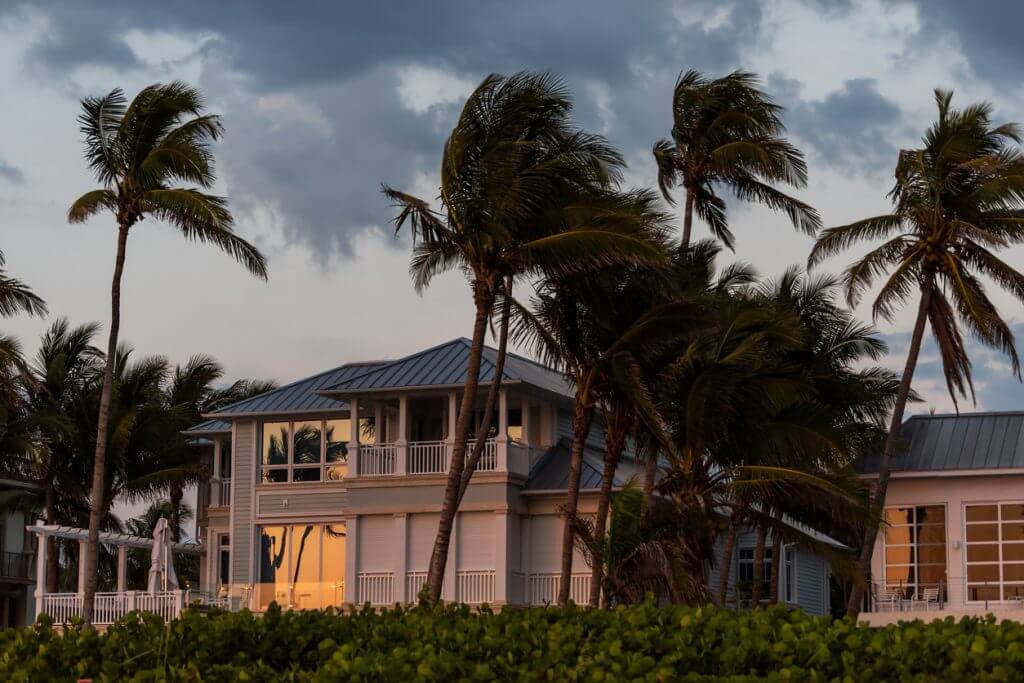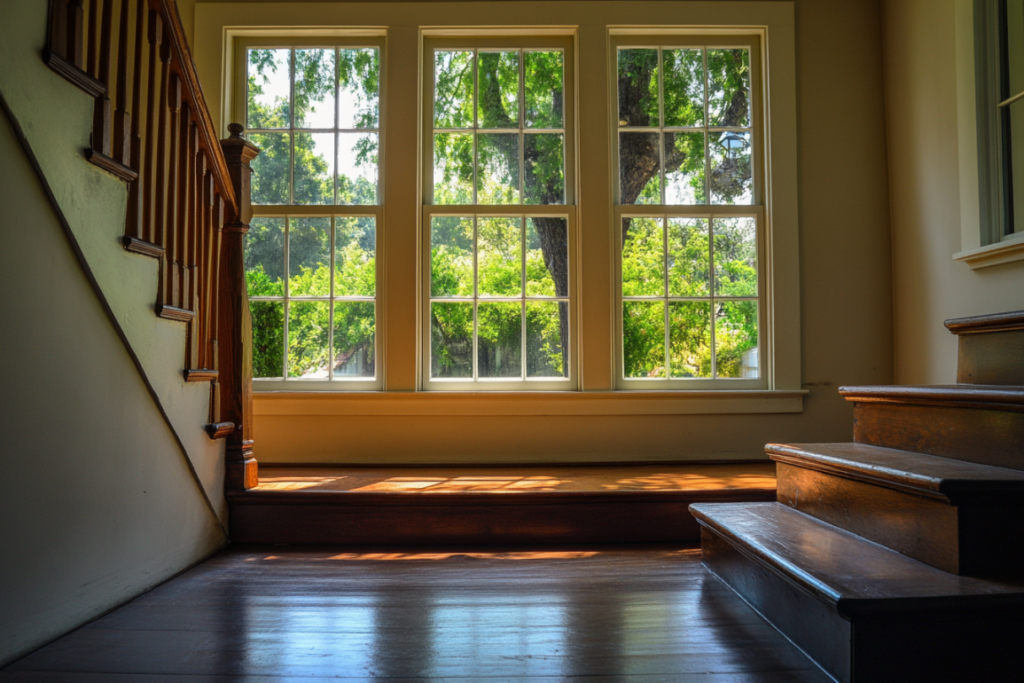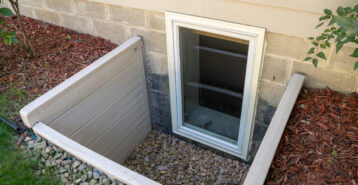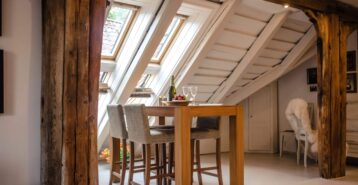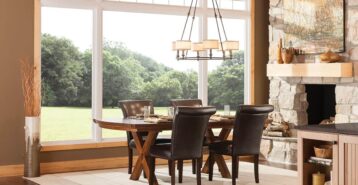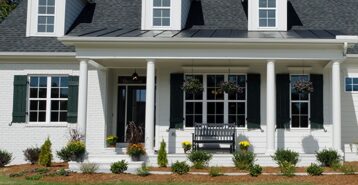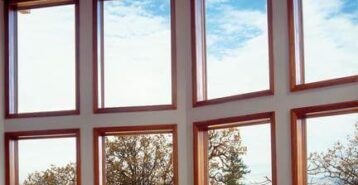What Are Replacement Storm Windows?
Replacement storm windows are windows that are installed over a home’s existing windows to offer additional protection from harsh weather and increased energy efficiency. They can also be installed over windows in older or historic homes to preserve their original architecture and help meet stringent community design guidelines.
Where Are Storm Windows Installed?
Storm windows can be installed on top of nearly any type of residential window. The most common type of storm window is installed on a home’s exterior, with several operable or fixed options depending on the manufacturer. There are also storm windows constructed for interior installation that offer additional insulation and energy efficiency — because they are located on the inside they do not offer protection to the existing window.
Storm windows are a great alternative to replacing single-pane windows. They are weather-resistant, affordable, and energy-efficient.
How Do Storm Windows Operate?
Replacement storm windows can be operable or fixed, meaning some models can open and close, while others cannot. The most common storm window features a double track that allows for easy operation: one track includes glass on top and a screen on the bottom, and the second track includes a glass panel that moves up and down.
A triple-track storm window is an option to preserve the functionality of a double-hung window. This type of storm window features two glass panes and a screen in separate tracks that allow opening at the top or bottom to control airflow.
Storm Windows Replacement Costs
Adding storm windows can improve a home’s energy efficiency without the higher costs of replacing existing windows. The average cost to install a storm window is $172 to $320. For comparison, single-hung window replacement costs range from $397 to $847, and a double-hung window from $388 to $828.
While storm window installation is a popular DIY home improvement project, it requires precise measuring and drilling into your home’s window frame. A professional window installer can ensure a proper fit, and the average labor cost per window ranges from $70 to $150.

Storm Windows
Average Installation Cost $172 - $320
Cost Breakdown
- Materials 84.5%
- Labor 15.5%
Factors That Affect Storm Window Costs
- Size: Larger storm windows cost more than smaller windows. Custom sizes also have a higher price tag.
- Type: Typically, the more moving parts a storm window has, the higher the price. Expect to pay more for a triple-track storm window compared to a double-track or basement storm window.
- Material: Framing material and glass type will also affect the cost of storm windows. Aluminum and standard glass are the most cost-effective framing materials and glass, respectively.
- Local installation and labor: If you plan to have storm windows professionally installed, expect to pay between $70 – $150 on average per window.
Storm windows are considered a worthwhile investment by window professionals since they are low-cost and can efficiently protect your home from harsh weather. Keep in mind that costs can vary depending on the type of storm windows you choose and the average cost of professional installation in your area.
Types of Storm Windows
Replacement storm windows come in a few different types to accommodate your specific needs and how you would like them to function.
Exterior Storm Windows
Exterior storm windows are installed outside your home’s existing windows. You can choose models that install temporarily or permanently and ones that open and close.
- Two-track storm window: This model features a glass panel and screen combination. A second inside glass panel opens from the bottom.
- Three-track storm window: This option includes two glass panels and a screen on separate tracks. This design allows operation from the top or bottom.
- Basement storm window: This is a fixed, single-paned window that opens with a latch.
Interior Storm Windows
If your goal is to improve energy efficiency, consider interior storm windows. These windows reduce drafts and increase insulation around your existing windows without changing your home’s exterior look. You can find styles that install with pressure or magnets, as well as those that attach to the interior window jamb.
Disposable Storm Windows
Disposable storm windows are sold as kits. They consist of clear plastic with framing strips that you can cut to size and install over your existing windows.
Storm Window Materials
The most common materials for storm window frames are aluminum and wood. Aluminum is popular for its durability and ability to withstand the elements. In contrast, wood storm windows preserve the architectural look of your home.
Storm windows come with standard or low-E glass panes. Low-E (low emissivity) glass features a thin transparent coating that reflects heat. This keeps your home warm in winter and cooler in summer.
Plexiglass panels are available for interior storm windows, but they are not recommended for the exterior, as they do not provide as much protection as glass.
Benefits of Installing Storm Windows
When considering your budget and the condition of your existing windows, storm windows can provide several benefits as both a temporary and permanent solution:
Weather Protection
Exterior storm windows add another layer of protection against heavy rain and high winds.
Reduced Energy Consumption
Storm windows help reduce drafts, making your home more airtight and energy-efficient. On average, households with storm windows over single-pane windows save about $350 annually on energy bills.
Noise Reduction
Another benefit of storm windows is their ability to reduce noise. This feature is particularly helpful if you live in a busy neighborhood or near a main road.
Affordable Option
Storm windows are a cost-effective solution for older, drafty windows. If your existing windows are in decent condition, adding storm windows can enhance your home’s comfort and energy efficiency at a fraction of the cost of a full window replacement.
How to Install Storm Windows
With the right tools and a few hours, you can install storm windows yourself. Here’s how:
Installing an Exterior Storm Window
- Clean the existing window and make any necessary repairs.
- Position the storm window over the opening and check for fit.
- Caulk the top and sides of the storm window’s backside, leaving the bottom clean.
- Place the storm window over the opening and push it into place.
- Screw the storm window into the frame.
- Adjust the included expander to fit snugly against the windowsill.
Installing an Interior Storm Window
Most interior storm windows use a compression-fit or magnetic-strip installation. Some screw into the windowsill or hang from a bracket attached to the top window jamb. Be sure to measure your interior window opening accurately for a snug seal. Follow the manufacturer’s instructions for installation.
Though replacing a storm window is generally easier than replacing a whole window, many homeowners prefer to hire a contractor for installation to ensure it is done properly. If you plan to install multiple storm windows, it’s wise to get an estimate of your total installation costs in advance so you can negotiate with your contractor.
What to Consider Before Buying Storm Windows
If you have decided on storm windows for your home, there are a few factors that may influence your purchase.
Storm Window Brand and Quality
Many of the top and most recognizable window manufacturers offer a line of storm windows. Renewal by Andersen, Marvin Windows, Simonton Windows, and Pella Windows all feature various types and sizes of storm windows. Warranty coverage also varies from 10 years to lifetime — all have coverage limitations and requirements, so know your product’s warranty before you buy.
Energy Efficiency
Storm windows are available with low-E glass panels that reflect heat. While they increase the energy efficiency of older or single-pane windows, they do not offer much-added protection if you already have double or triple-pane windows installed in your home.
Climate
Where you live may dictate the type of storm window you need. For example, in regions with high amounts of moisture, aluminum-framed windows provide more corrosion resistance than other materials.
Lifespan
Well-maintained storm aluminum storm windows can last 30 years or longer. With regular painting and sealing, wood frames can last even longer.
Cleaning and Maintenance
More window parts take longer to clean, so expect to spend more time maintaining triple-track windows. A window with more moving parts is also more vulnerable to wear and tear and may require more frequent repairs over its lifespan.
Finding Storm Window Installers
Installing storm windows can be a straightforward DIY project, but window location and the complexity of the project may be a better fit for a pro. Use Modernize’s window project calculator for a budgetary estimate and to connect with local installers for a custom quote.
Compare top-rated windows pros in your area.
Read real homeowner reviews, explore qualifications, and view promotions. Modernize makes it easy to browse professionals and find one that will be perfect for your project.
